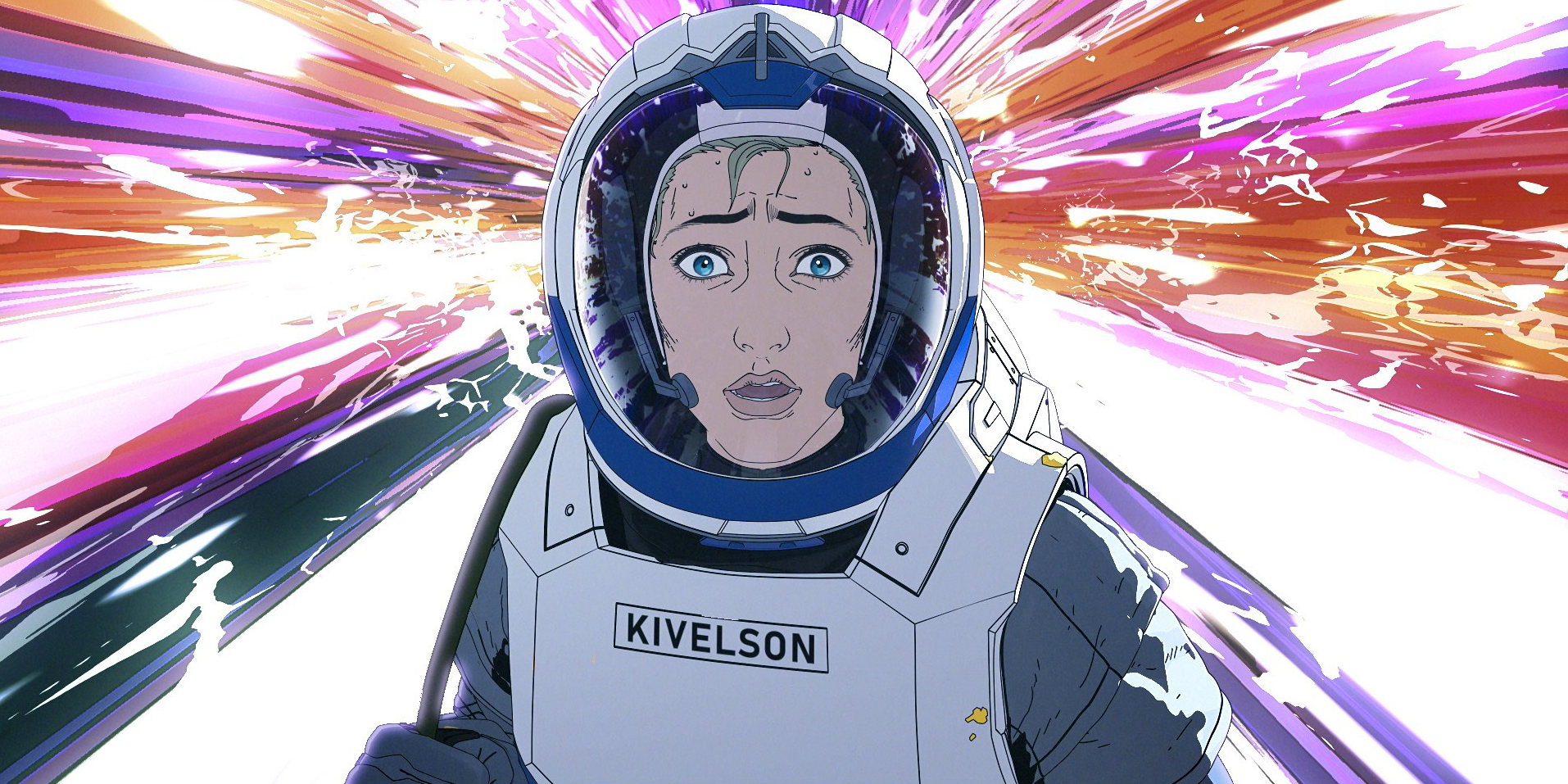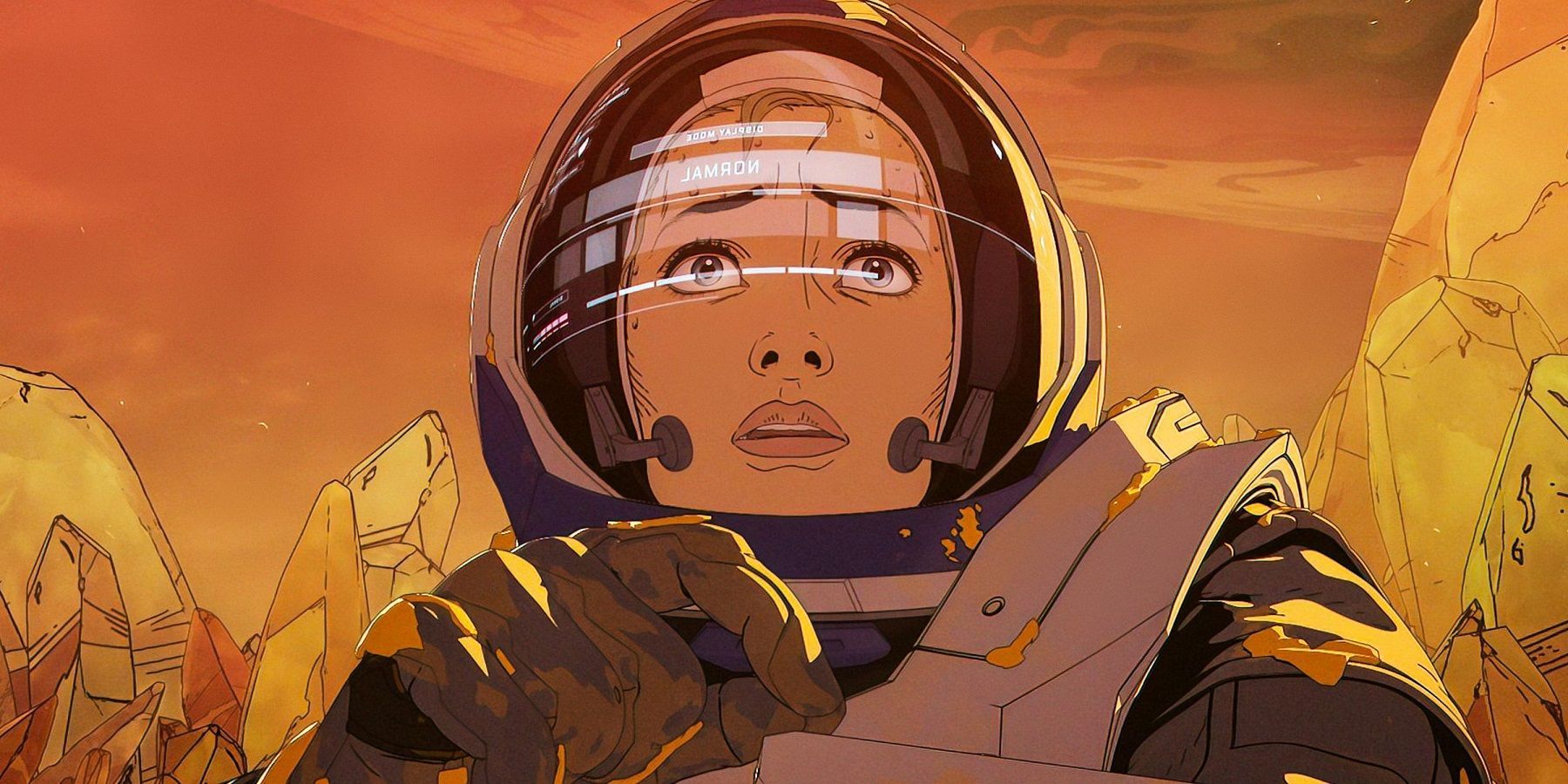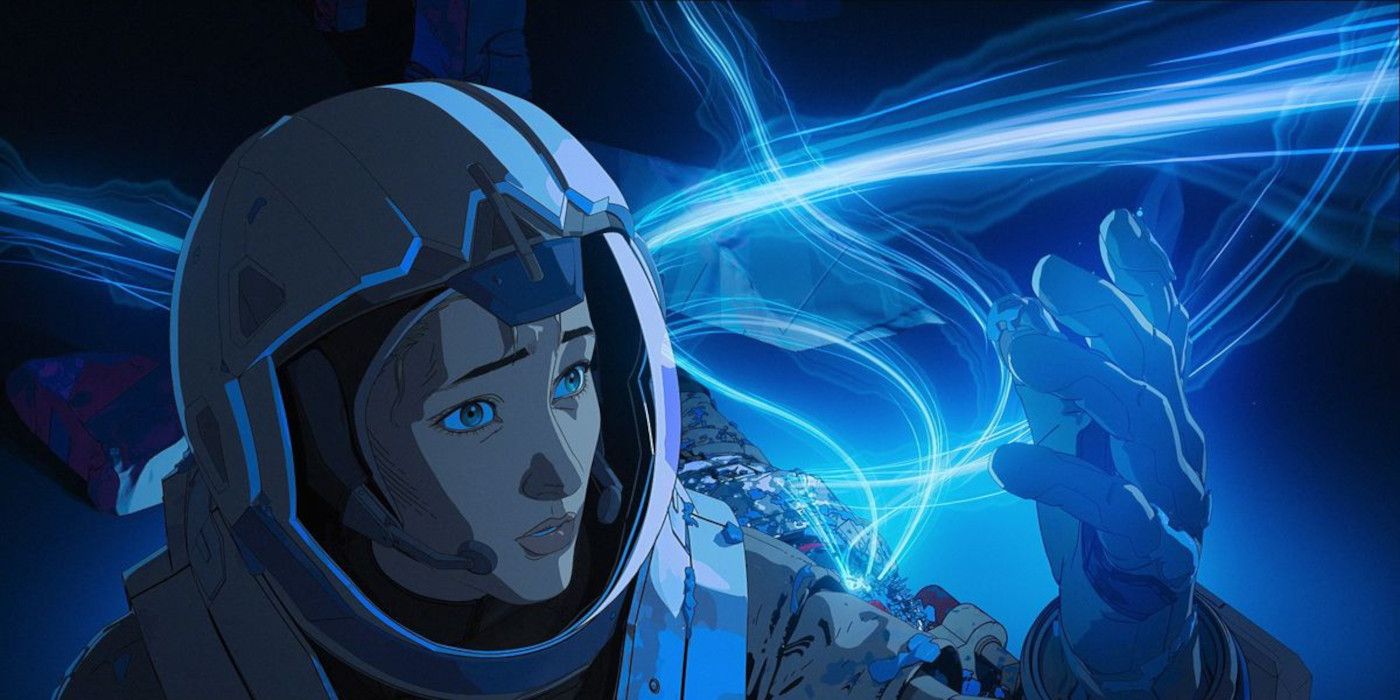The third installment of Netflix's edgy adult animation series, Love, Death & Robots, brings another 9 episodes to the crazy genre mashup anthology show, including a new short story titled "The Very Pulse of the Machine," directed by Emily Dean. Most of the show's episodes are adaptations of existing short stories, but "The Very Pulse of the Machine" wears its literary inspiration, a short story of the same name by author Michael Swanwick, on its sleeve.
During a mission to Jupiter's moon of Io, two astronauts crash their rover, leaving one to make her way back to base under the influence of a high dose of pain medication to ease her injuries. As she recalls a number of classic poems and starts to hallucinate (or maybe not), she begins to receive messages from the planet itself, guiding her, if her mind can be trusted.
Leaning into themes of exploration and loneliness, "The Very Pulse of the Machine" is a fairly esoteric episode with a lot of questions about the nature of life and mystery about what really happens to Martha Kivelson (Mackenzie Davis). Director Emily Dean sat down with Screen Rant to discuss the episode and answer some questions about how it came to be and what it all means.
Screen Rant: I really enjoyed "The Very Pulse of The Machine" quite a bit. I haven't read the short story before, but it made me go back and read the short story and then go back and watch the short. And I thought they were complimentary in a lot of ways that I really appreciate it.
Emily Dean: Very cool. Yeah. Thank you.
I know there's a strong Mobius influence in the animation. Obviously, he was a really big influence on a lot of different Sci-Fi and different art styles and stuff. But I thought that was really interesting because in a roundabout or very direct way, I guess, depending on how you map it, his influence on heavy metal very much led to Love, Death & Robots. Was that something that was discussed at all when using him as inspiration?
Emily Dean: 100 percent. From my very first meeting where I came in and had an introductory meeting to the whole team back in May of 2019, three years ago, I said I would really love to do a love letter to Mobius, and I think that's really what piqued their interest. And it had a big bearing on- I got invited to read all the short stories that they were doing for volume two because originally this piece was meant to be a part of volume 2, but obviously it was a pandemic and everything and the process took a long time, so it ended up being part of volume 3.
But when I read The Very Pulse of the Machine, I felt it was the perfect marriage of these two influences. Michael Swanwick’s story was a great base for bringing in the visuals from Mobius.
I thought that was really interesting because I loved the little Easter egg you had in there with the old Earth poetry book that's credited to Michael Swanwick. But I went back to pause that to clarify to make sure I was right because it was just a quick thing to catch, and I noticed that you actually have the actual short story written on the inside of that book.
Emily Dean: Yeah! That was a little Easter egg that we came up with, and Michael also said it was a fun idea, too. Wow. You actually paused it and read the text? That’s impressive.
I didn't realize that the text was legible at first because I was just pausing it to check the cover, but I thought that was really brilliant. Also, I don't know if you intended any sort of a meta meaning to that, but I think given the context of the story…
Emily Dean: There is a reading that could exist where, yeah, it's all part of that story. That's awesome.
You said you thought that Swanwick and that short story was a great sort of pairing with Mobius. So I was really curious, since Swanwick's short story specifically leans so heavily on other poetry and literary references, how does that then influence your approach to deciding how to display it visually in order to make sure that that sort of feeling can be seen and is not just present in the text?
Emily Dean: Yeah, that's the wonderful thing about poetry, is that it's so evocative and it's not meant to make literal sense, if you know what I mean. It's meant to make emotional sense. So using poetry actually freed us visually as well to create visual poetry, but it really helped us to open up the narrative and do a lot of experimentation.
I don't know if you could see by contrasting the short story with the film is that the film is a little bit different and it leaves out some parts and it includes some other parts. That's because we actually did do a version at the very beginning, which was pretty much a straight telling of Michael Swanwick’s story. And in a second pass in production or pre production in the storyboarding phase, we're like, what else could this be? Let's heighten the story. Let's push it further than just what the short story does. And so the short story leaves us off with Martha jumping into the voice, but it doesn't really answer the question of whether or not she merges with Io.
For me, I kind of wanted to push it a little further because the question that I found interesting was not so much does she merge with Io, it’s, I found it interesting more if she does merge with Io, is she Martha Kivelsen? What does that mean for the rest of us? So, I took it that little bit further.
One part about you paring it down that I really liked was at the climax, when she asks Io, “If you're a machine, what is your purpose?” Since I had seen the short first, when I read the story, I found it interesting that the Io actually says, “To know you, to love you and to serve you,” The poetry and the motion at that moment, simplifying that to “to know you,” is really fascinating. It's almost all-encompassing of the three without being too expository in the telling.
Emily Dean: Yeah. There's a theme of loneliness in the story, and the antithesis of being lonely is to have someone know you. And I thought that was pretty beautiful.
Awesome. Going back to the animation style and Mobius, I think one of the interesting things is the visual look. So many of the frames look like it's something off a hand drawn comic; it's really evocative of that style even though it looks great in motion. Then you start doing more with the light and the energy that really, really pops. I'm curious about the process for deciding the style in order to have that complimentary visual appeal.
Emily Dean: We worked with Polygon Pictures in Japan, and they're incredible. They're just wizards and they come from, obviously, an anime background. But we wanted to bring the French influence in, what's called the Ligne Claire style, which means clean lines. And so we worked with a lot of contract artists, but primarily with a small studio - a French couple that helped us to marry the French influence with the Japanese to make something kind of unique and different. We used their designs and Polygon came up with a lot of designs for Martha and vehicles and the astronauts and a lot of other things. But it was really just kind of finding that middle ground and it's hybrid approach between CG characters.
They're all 3D, the characters, the vehicles, some of the background elements like the crystals and stuff. And then you also got 2D painted backgrounds that are drawn by hand and all the line work that is done on the characters themselves, especially on the faces. All of that is on the CG model and had to be sort of tweaked by hand by artists in Japan. And it was a very time consuming and laborious process to marry these disparate elements to make them cohesive.
Check out our Love, Death & Robots interviews with creator Tim Miller & supervising director Jennifer Yuh Nelson, as well as with director Alberto Mielgo.
Love, Death & Robots volume 3 is now available to stream on Netflix.



